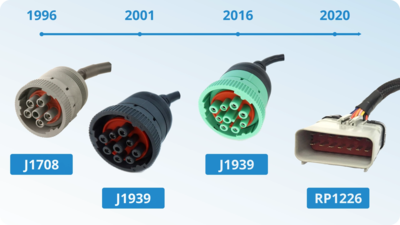Hours of Service (HOS) regulations are an essential aspect of the trucking industry, dictating how long a driver can operate a commercial motor vehicle before taking a rest break. The most common HOS ruleset is the 70-hour 8-day ruleset, which limits truck drivers to a maximum of 70 working hours for any given 8-day period before they have to reset their clock. However, there are two ways drivers can manage their HOS: recaps and restarts. We will explore the differences between the two and the pros and cons of each.
What is a Recap?
A recap, also known as recapture, is a practice that trucking fleets use to avoid a 34-hour restart. In a recap, a driver works fewer hours each day but works every day for a whole week or possibly even a month. Recaps are used to manage a driver's HOS while keeping them on the road as much as possible. It is important to note that the Federal Motor Carrier Safety Administration (FMCSA) has strict regulations about HOS management, and while recaps can be a useful tool, they should be used with caution.
The Pros and Cons of Recaps vs. Restarts
Both recaps and restarts have their advantages and disadvantages, and which one is used depends on the needs of the driver and the fleet. One of the main advantages of restarts is that a truck driver can max out their daily clock, meaning they can work for longer periods during the day. In addition, drivers get a day off at the end of the week. However, if a restart is not planned ahead, a driver may find themselves parked in an unfamiliar area to complete the 34-hour restart.
On the other hand, the primary advantage of recaps is that a truck driver can work every day, including weekends. Recaps also allow for shorter workdays, which can be beneficial for drivers who need more rest time. However, a significant disadvantage of recaps is that drivers do not get a day off. Recaps require drivers to be on the road every day, which can be tiring and exhausting. It is important to remember that choosing a ruleset does not mean that a driver can only use that ruleset. A driver can use either recaps or restarts at any time during the week, depending on their needs and the requirements of the job.
Why You Should Always Try to Restart Your Clock
If you are considering using recaps, it is essential to understand the implications of doing so. While recaps may be useful in certain situations, restarting your clock may be more beneficial in the long run. Restarting your clock allows you to maximize your HOS and increase your fleet utilization. For example, let's say you are in talks with a new customer on a lane, and they would like the same truck to pick up a new load every two days. If the trip takes about 8 hours one way, a driver could do a run like this indefinitely, as 8 hours a day multiplied by allowed 8 days equals 64 hours, which is less than the 70 hours allowed by the FMCSA.
The problem with recaps arises when you compare the number of hours worked for the whole month to the same month if the driver was doing restarts. In a 28-day month, a driver doing recaps would do 224 hours. However, if they ran restarts at 11 hours a day for 6 days, with the 7th day set aside for a restart, they would do 264 hours in a month.
The Do-It-All Fleet Management Platform.
Start Today, No Contract. No CC.

Please review all HOS regulations on the FCMSA Website.
TruckSpy helps fleets improve fleet utilization, safety and uptime with industry leading technology like the AI dash cam, fleet wide tracking and easy load dispatch. Get a free, no pressure demo with one of our knowledgeable reps here.
Recent Blogs
by Elyse Byers
July 5, 2024




